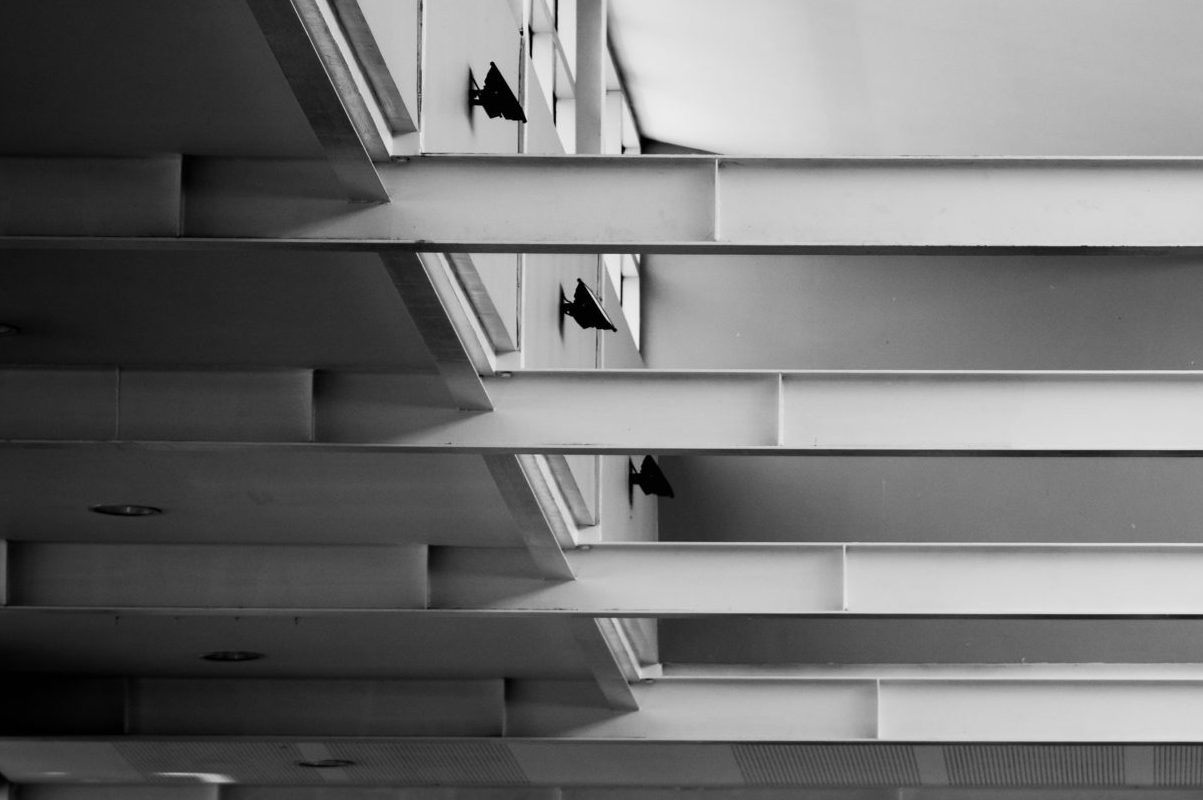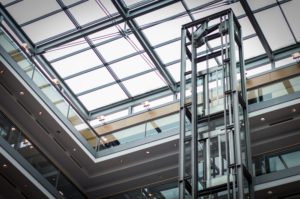
With a wide range of options and customisation, architects can integrate metal cloth ceilings seamlessly into their design plans. Metal fabric ceiling systems present a mix of acoustical controls, rigidity, and suspended systems components, which allows the designer to maximize functionality as well as beauty. Metal ceilings are extremely versatile construction products because of their different levels of rigidity, flexibility, dimensions, and shapes.
Whether you are hiding wiring, plumbing, or ductwork, or hiding unsightly or boring drywall ceilings, the flexibility of the metal ceiling system allows for unlimited design. Designs that were once imaginable are now a reality, and today’s Aluminium ceiling battens systems provide unprecedented flexibility and customizability to your projects. Perforated aluminium ceiling systems allow you to seamlessly integrate soft sound(r) backer, which is acoustically performing, comes in multiple colours, and compliments your design while also reducing and controlling reverberation. Through woven-and-backed combinations used, acoustical controls can be integrated within the metal ceiling panels, adding a secondary acoustic backing layer for improved acoustics within a room.
Suspension ceilings can enhance acoustics within a room by lowering ceiling heights, and also adding more absorptive materials. They can also create a much cleaner design, hiding wiring and heat and ventilation paths. Suspension ceiling accessories, like light fixtures, fans, or other HVAC access panels, are usually found in these same dimensions. These ceilings are usually made from plasterboard and may be used as a decorative element, combined with lights and other objects, as in NAJ Apartment/Triplex Arquitetura, which uses plaster ceilings to conceal the curtain tracks, for instance, while other rooms in the unit have wooden ceilings that shield ventilation and lighting systems.
Ceilings are a crucial element of architecture and interior design, merging function and aesthetics with various materials, adding layers of texture and colour, providing quality and comfort to the indoor spaces, and also as a protective surface to the other systems in the building. Ceilings are not usually given much attention in architectural projects, however, they do possess significant characteristics which can be integrated with design, such as their heat and acoustic properties, as well as their functions as protection to the building’s systems. They are a useful place to install components, such as speakers, lighting fixtures, fire and smoke alarms, automatic sprinklers, and so on. Aluminium ceiling tiles come in a variety of colours and textures, which allows for a great look to complement any interior design scheme.
Amazing ceiling designs can be created using metallic fabrics, including unique designs like coloured fabrics, grid ceilings, or monolithic ceiling systems. When it comes to the metal as a ceiling material, there is practically no limit on what can be achieved; an imaginative concept can be transformed into a colourful, genuinely inspiring design. Offering a classy, smooth finish that can be formed to reflect, complement, or enhance the building’s identity, metal is the go-to ceiling material for developers looking to place their signature touch on the design. Custom-made architectural designs can be achieved using metal, with architects, engineers, designers, and manufacturers working together to marry aesthetics with key performance criteria to create sustainable indoor environments.

Contemporary architecture also provides scope to explore new materials, such as the Green Pavilion/Tom Munz Architekt using rubber panels, and Seddon House/Clintons Murray Architects using straw in its ceiling.
Architectural metalwork can include several products driven by design, including custom-made ceilings, cold-beam canopies, sound insulation panels, bulkheads, column covers, and wall panels, which satisfy the demand for products with heightened specifications. From functional uses, like false ceilings, where lightweight aluminium panels are fitted to hide wires and ductwork, to a more decorative applications, like coloured wall panels, aluminium has an infinite amount of potential. Aluminium can be used for a vast array of applications, such as wall panels, soffits, and ceilings, and ventilation systems, such as chilled beams and ceilings. When specified as an internal wall or ceiling cladding, aluminium does not degrade, flex, or discolour if exposed to the harsh sun.
Surfaces on exposed ceilings typically produce an echo chamber, which requires solutions such as acoustic materials that are spray-on. Ceilings that are not well designed and constructed can create problems related to both the acoustics and the mechanical-electronics characteristics. Fortunately, there are a sufficient number of perforated metal ceiling systems on the market to make it easy to bypass any sound problems, and in fact, improve acoustics in the room. One drawback to using metal in your ceiling is that harder, smoother surfaces may lead to sound problems in certain situations, and metal is certainly one that falls into this category.
For instance, an accented metal ceiling may maintain its acoustic properties, which is particularly important in environments like meeting rooms. Perforated metal ceiling panels also reduce noise, since perforation allows air through holes, which decreases the rate at which sounds are created. Perforated metal ceiling tiles allow for a proper ventilation system since the air flows rapidly, making it safer and cleaner than a regular ceiling. Custom-made micro-perforations on the ceiling panels allow for natural airflow as well as temperature control by the cooling metal rafters of the active ceiling.
Having exposed ceilings also provides additional room for warm air to rise, making rooms cooler — something that could benefit a hot climate. An exposed ceiling uses less material, increasing the amount of indoor space, and in certain applications, it can be preferred by architects due to its industrial look. Exposed ceilings may provide a sense of beauty in buildings, leading to productive, attractive spaces for employees and tenants. From commercial office buildings to airport terminals, rail stations to malls, metal ceilings have emerged as the preferred design solution, providing the specifier with limitless range and possibilities, whilst meeting required acoustic, thermal, fire, and lighting requirements.
Panels can be installed horizontally as long as adequate support is provided via the engineer’s wall system at the time of installation. Aluminium ceiling grids may of course be installed on ceilings, but can also be installed on walls using Arkturas Vertika(TM) conduit system.
Louvre designs can be used as one-off designs, or several designs can be used together to create ceilings and walls exploring depth, texture, and the burdens placed upon the lines. Custom-made ceiling tiles, for example, can be designed in a particular shape, which fits together like a puzzle for a unique look.




